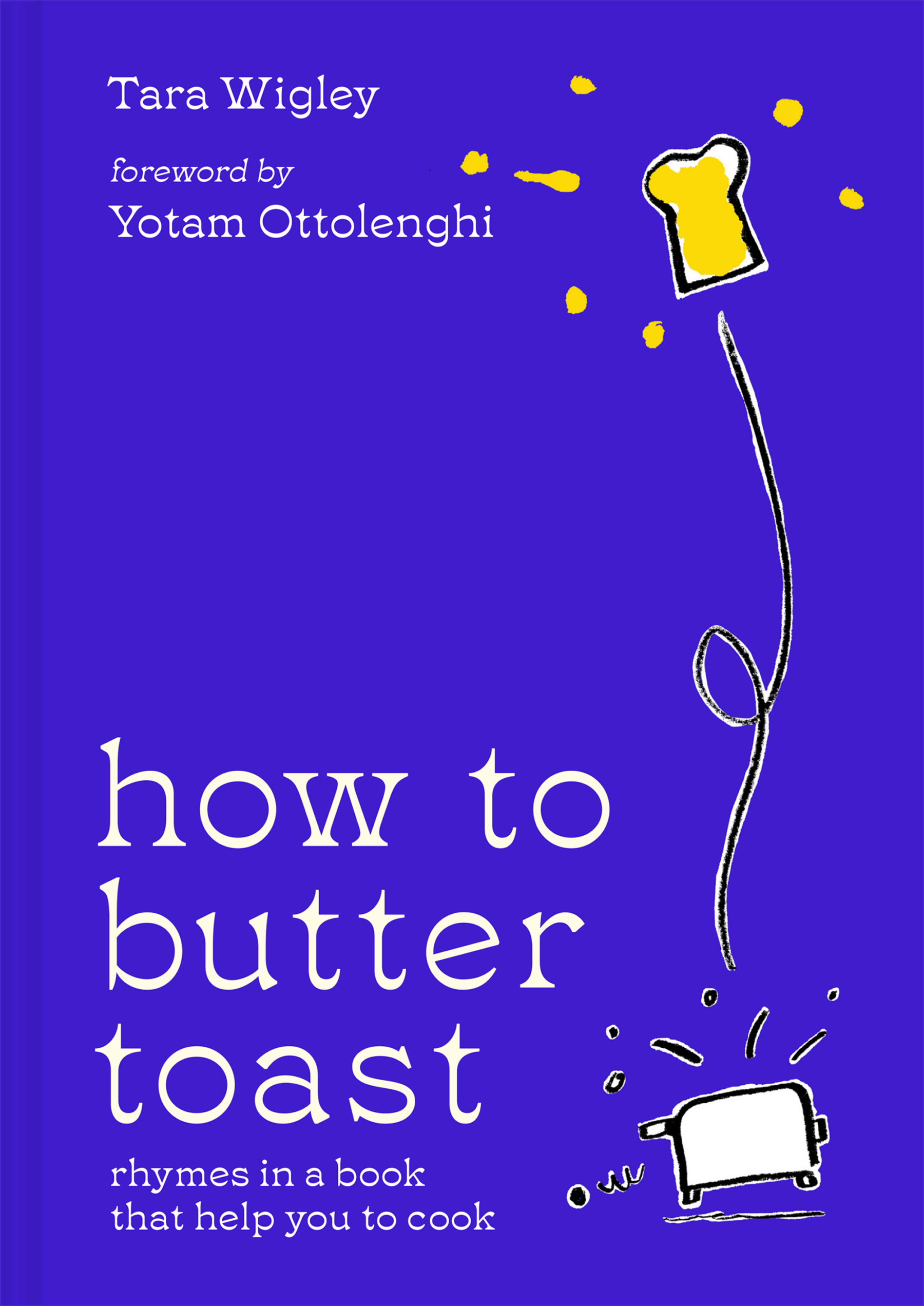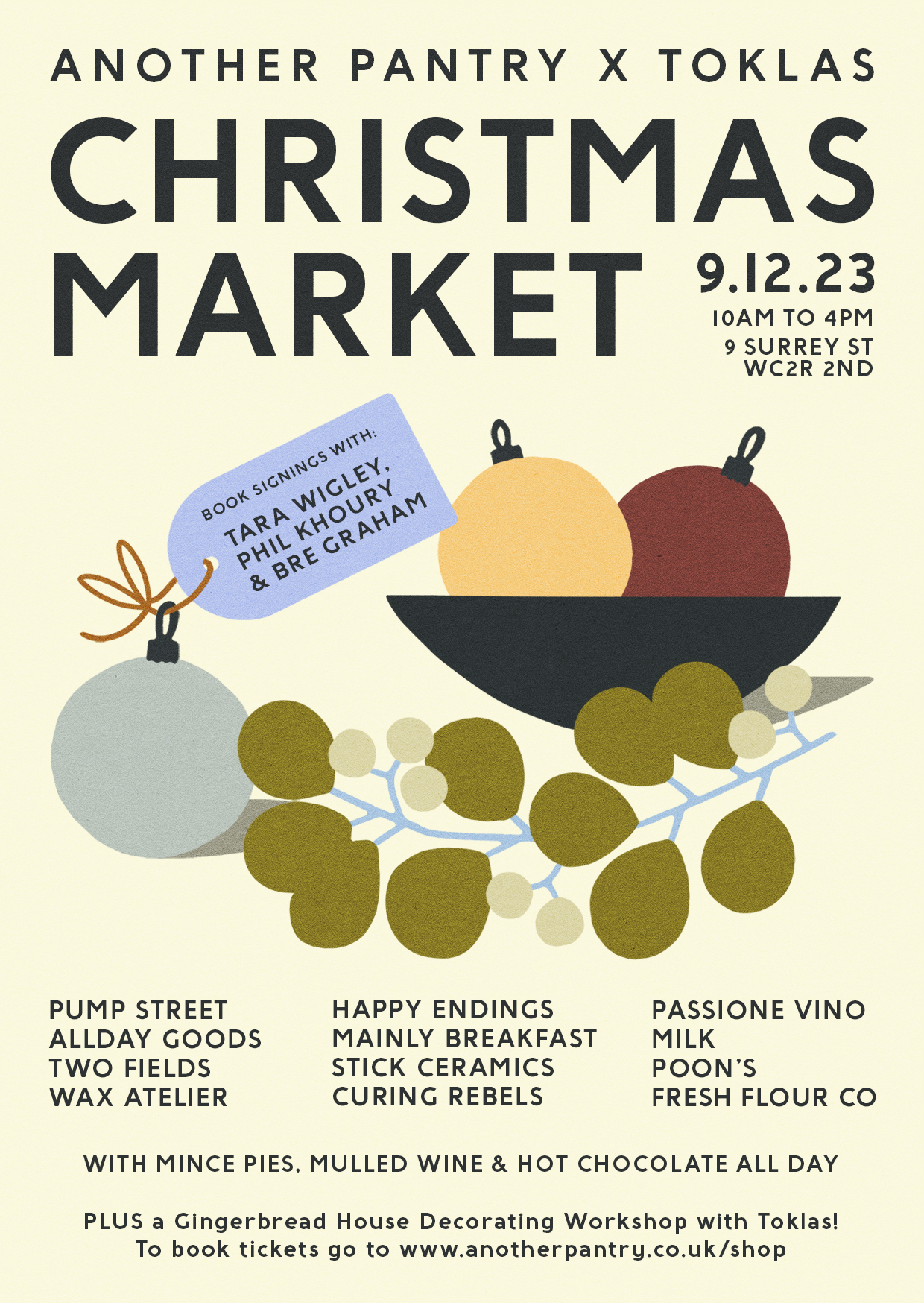
Mainly Breakfast: At The Table with Emma Cantlay
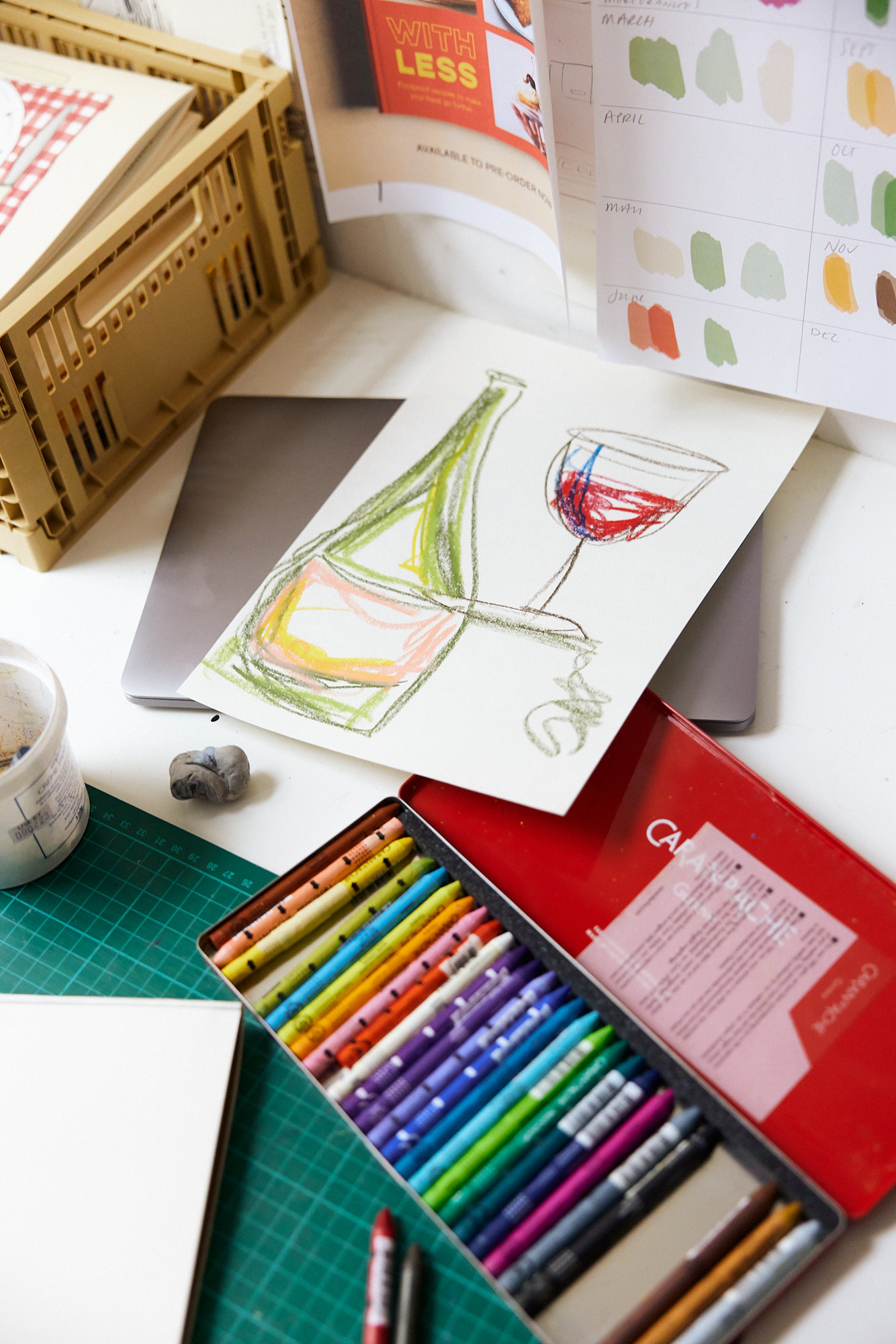
Working from the creative hub of her shared East London studio, illustrator and food styling assistant Emma Cantlay creates the wonderful, whimsical seasonal illustrations you’ll almost certainly have seen shared online at the start of each month. Guiding us gently through the best of the season’s produce, her monthly drawings are a welcoming, less intimidating path to enter the world of seasonal eating, and her annual calendar has become a best-seller, designed to keep us company whilst we cook our way through the year. We caught up with Emma before she took part in our 2023 market to chat about her journey.
Emma, where does your food story start? How did you work your way into a life in food?
I studied fashion design at university and ended up doing an internship in Portugal afterwards, which I guess is where it began. It was such an incredible six months. I think because it was the first time I lived away from home, I was suddenly thrown into the world of food and cooking. Thinking about it, I hadn’t had much food freedom in my life before then and being in Porto was like experiencing it all for the first time. It helps that it’s a beautiful city and the produce was just amazing. So often I would go down to the market before work which was such a treat, I suppose because I had always lived in Aberdeen before then, and unfortunately it’s one of the many places in the UK where food markets are really starting to fade.
“I guess I’ve always been quite interested in eating and more so how the world around us affects how we live. Food is such a huge part of that. And in terms of seasonality, it’s really hard to know where to turn to if you want to cook that way.”
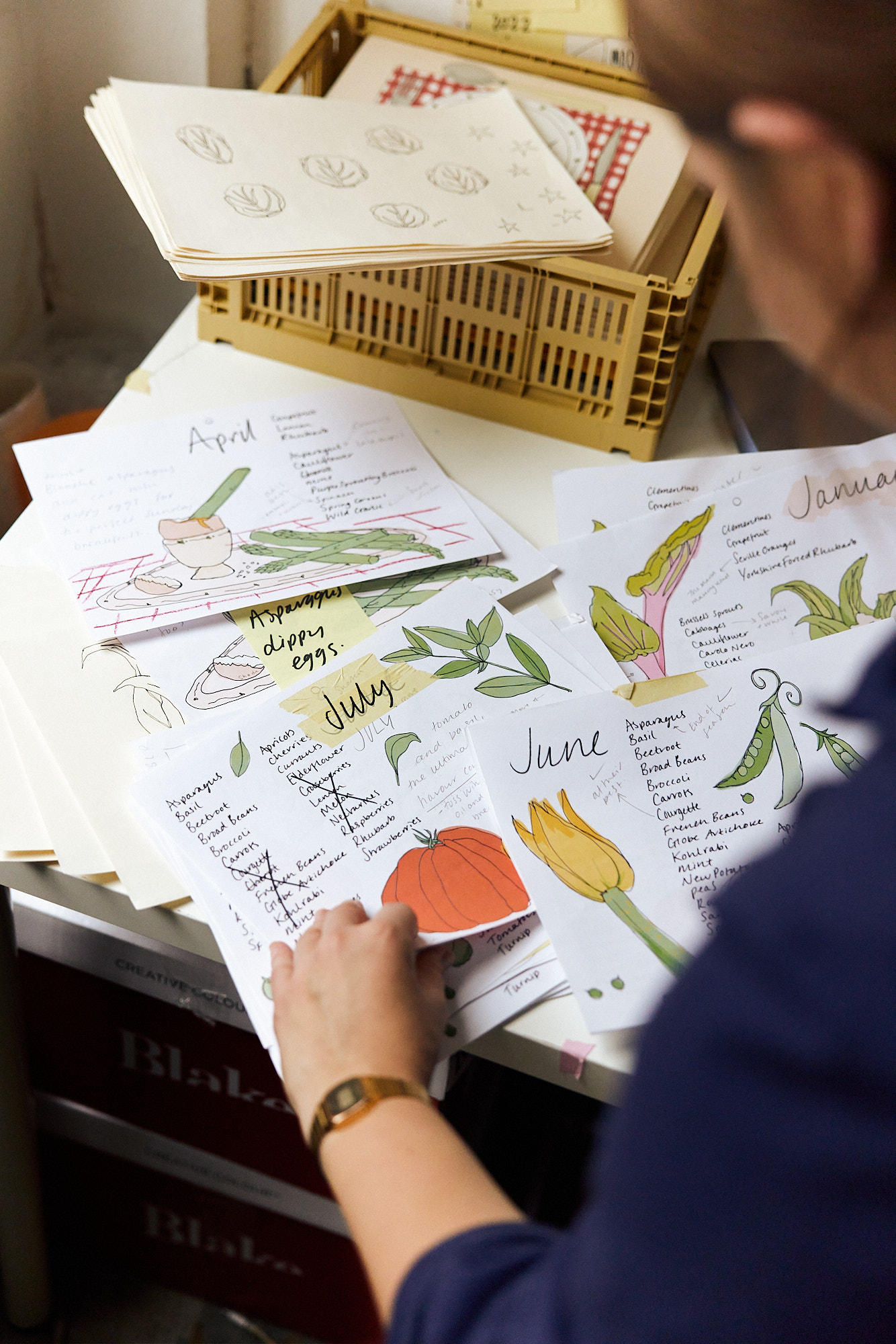
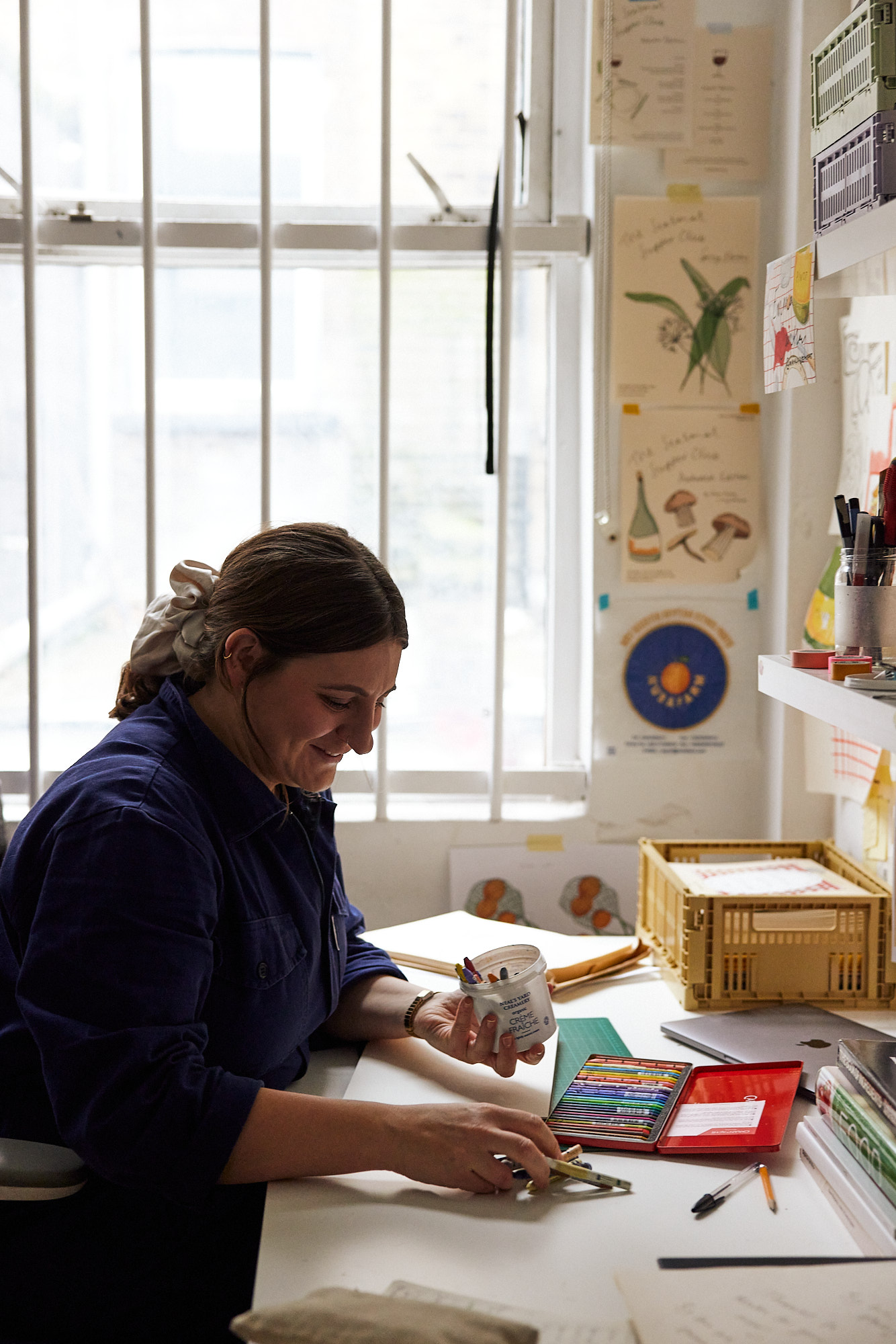
When I came back from Porto I worked in visual merchandising, but really I knew I wanted to be in food. I moved to London in 2018 and as a way in I started working for Table Magazine as their Online Editor alongside my full time job. I quit just before lockdown hit as I knew I needed to just launch myself into the food world if I really wanted to be in it, but then because I ended up having so much time, I started just Instagramming what I was cooking every day. I had been illustrating over that period too and the following year decided to create the first calendar, in 2021. Around all that, I began doing a bit of food styling work and I suppose it’s all just not really stopped since.
It’s quite common for so many of us in the food industry to have some kind of background in art or design, particularly food stylists. Why do you think that is for you? What is it about the relationship between food and art that allowed it to be such a natural progression?
I guess the basic principles you use when you’re styling go back to other types of design. Art school teaches you quite specific design skills that you sort of absorb without realising — things like colour balance and how things fit together in a composition, what kinds of shapes should be next to one another, how to make something visually pleasing. So I think it’s quite transferable to go from something like fashion design and even visual merchandising into the kind of food styling work I do as the principles are sort of the same. You’re always questioning how things balance each other out, whether that’s in a window or on a plate.
It’s also very much about being able to listen to your intuition and to be able to step back from something and know what to change, what looks good or what doesn’t. In art school you’re also constantly problem solving — if something doesn’t fit, how can I make it fit? You learn to foresee certain problems and deal with them earlier, I guess it’s the same in the process of creating food and cooking.
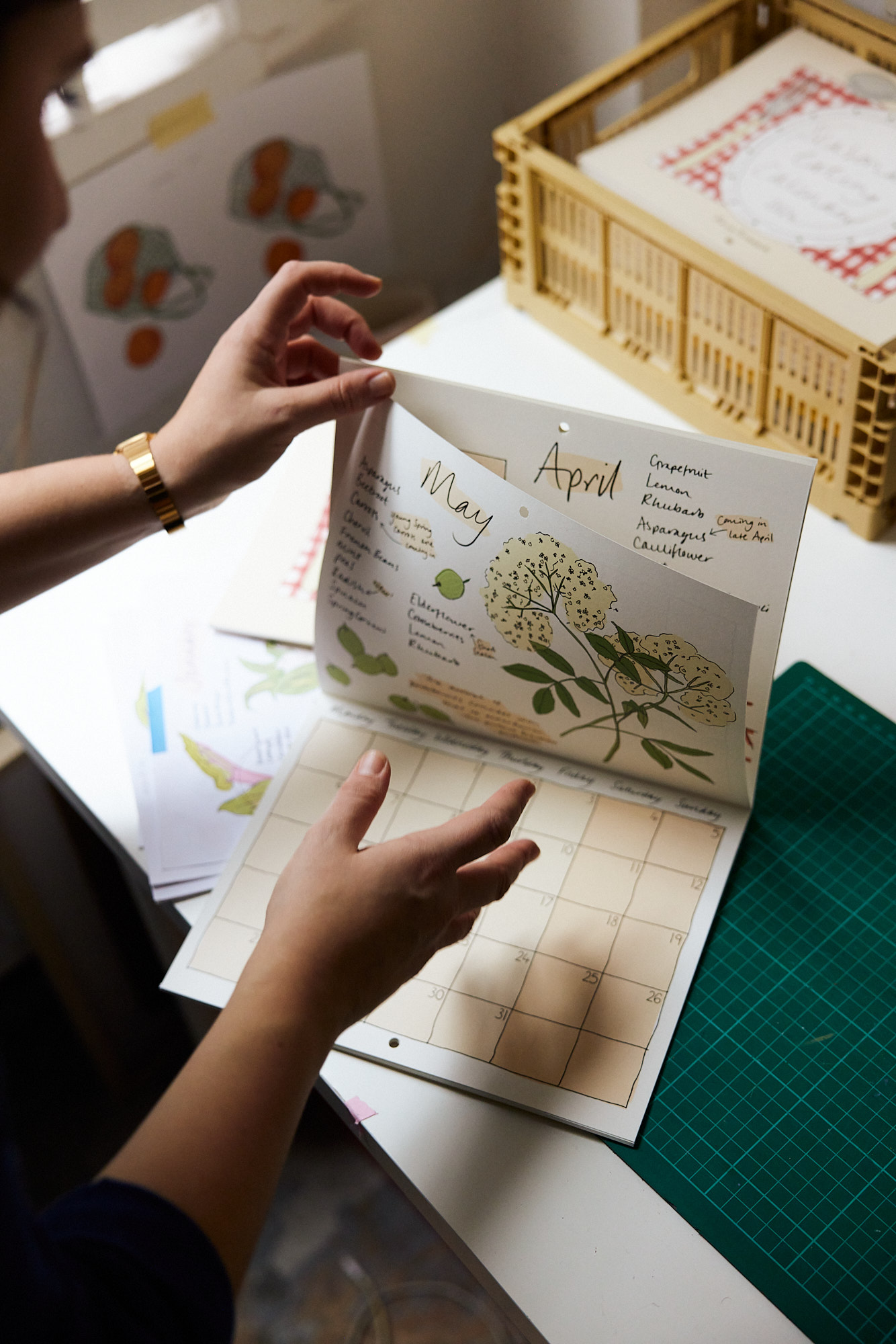
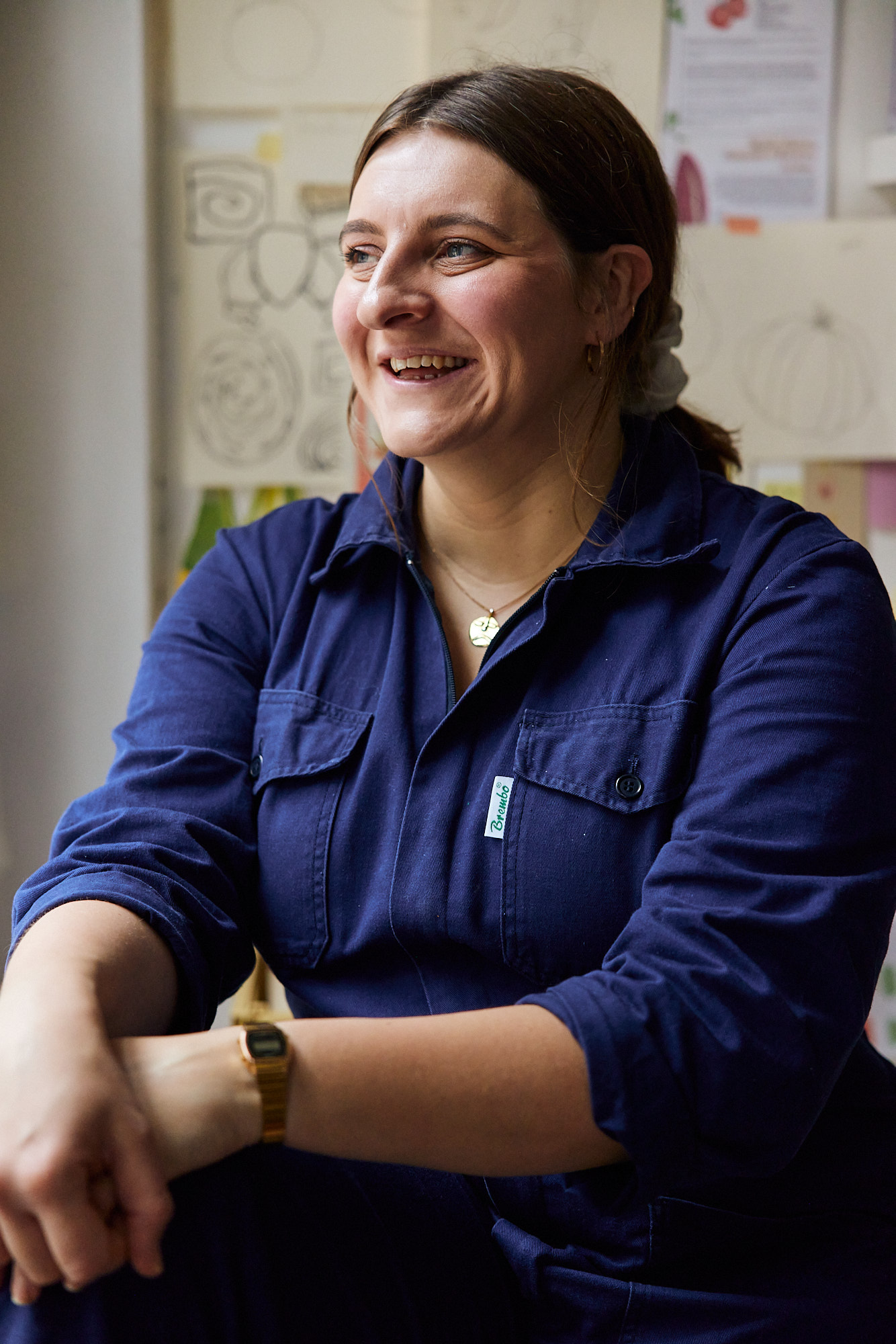
We certainly share a love of seasonality, and your beautiful monthly seasonal illustrations are often shared far and wide. Where did the idea or perhaps even the need for those illustrations and your annual seasonal eating calendar stem from?
I had just been creating these illustrations around what produce was in season and it wasn’t really for any specific purpose to be honest. I didn’t think too much about them, it was just a nice thing to do and keep myself busy when the world had gone a little quiet.
I actually hadn’t drawn for a good couple of years before then and it felt so good to get back into it. I suppose my way into it was that I started collaging again, something that I’d always loved even at university. Funnily enough at art school I absolutely hated drawing! I didn’t think I was very good at it — I was really good at the sewing and the practical element — but I just hated drawing and life drawing and refused to put pen to paper. I found it quite intimidating. Often I would just collage instead, which allowed me to create without having to put pen to paper. I began creating food collages, and they’re still on my bedroom wall! They weren’t really for anyone, just something for me.
I guess I’ve always been quite interested in eating and more so how the world around us affects how we live. Food is such a huge part of that. And in terms of seasonality, it’s really hard to know where to turn to if you want to cook that way. I think a lot of people don’t know much about eating seasonally and having to find that information out kind of deters people from it, so the illustrations felt like a friendly way in. Initially it was just for myself, a rough guide to remember what was at its best each month, but then I decided to put them on instagram. It’s so nice to see how they resonated with people.
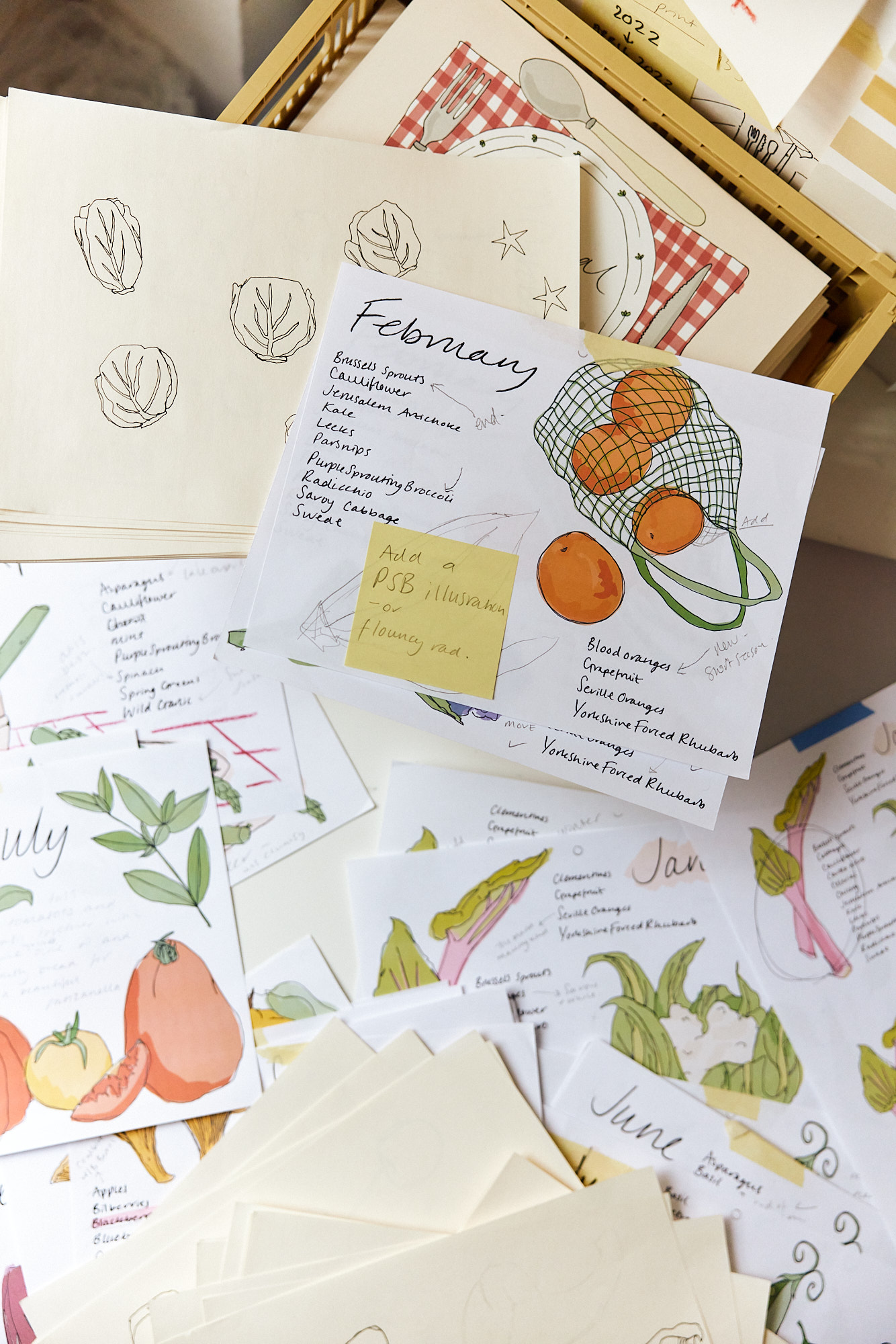
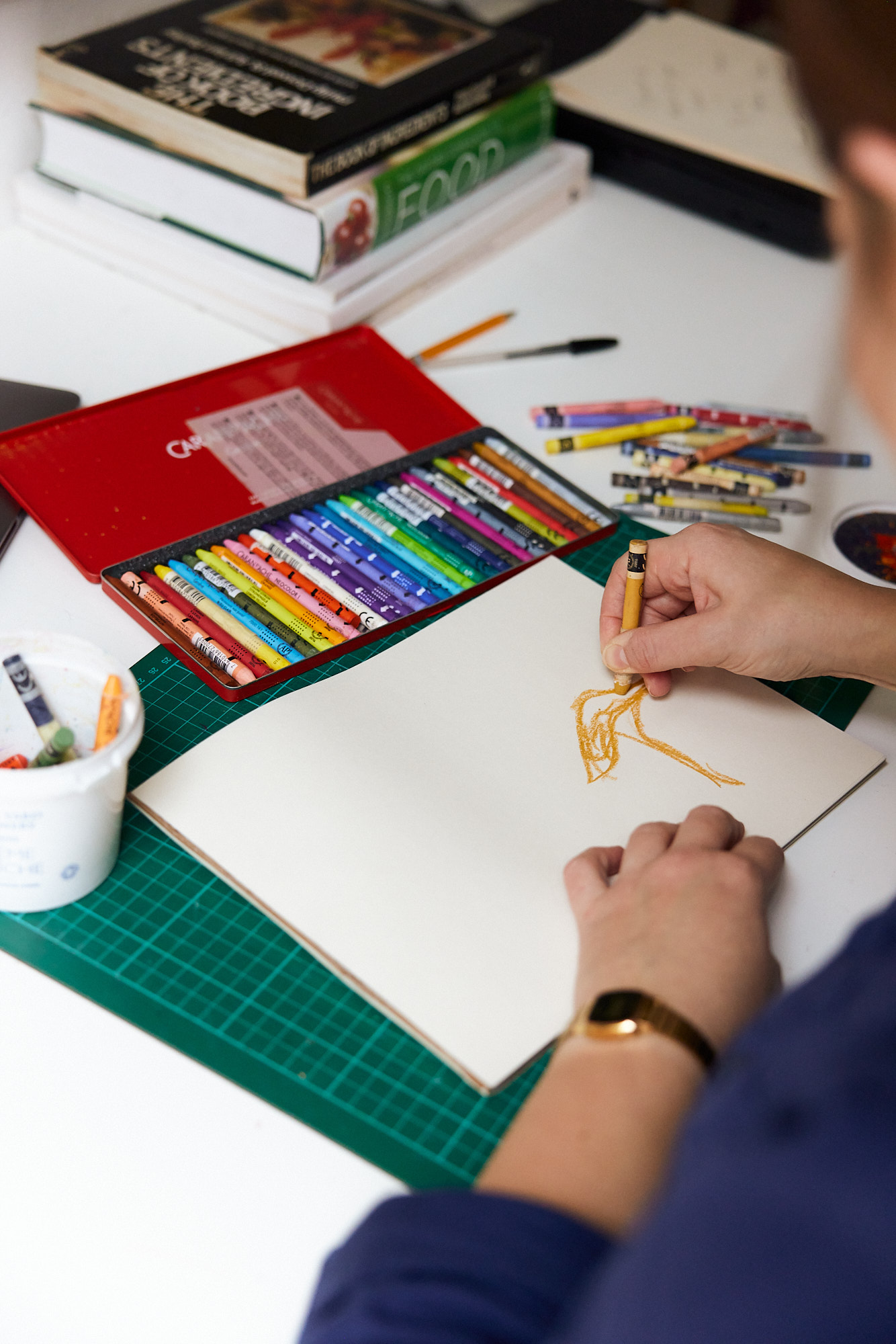
What are your thoughts on the way seasonality can impact the way we cook, eat and understand our relationship with food? Would you say it’s your guiding food philosophy or just one aspect of how you understand and create food yourself?
I personally feel like it’s just cooking and eating intuitively. In winter, I’m like, somebody feed me all the pies and all the cheese! That’s just what I want to eat. When it’s cold out I want to eat apples and poached quinces, or parsnips and cabbage, those big hearty foods that keep you warm. Of course then in summer, you want fresher flavours which is when those sorts of foods are in season, so I guess a simple way of thinking about it is just to even be in tune with the weather. Obviously, sometimes being in the UK, the weather can throw you off, but generally speaking, I think if you listen to what your body wants or needs, that so often ends up being in tune with the natural environment. It becomes a full circle thing where your body feels a certain way and it’s aligned with what the world outside is doing.
Would you say that the process of creating, whether an illustration or a dish to be cooked or styled, start from the same place? Or are they entirely different in how they are conceptualised in your mind and how you then produce the final product?
I actually think they are quite different. I guess they’re similar worlds and they sometimes collide, but the processes and experience of each one is quite different for me. Quite often when I’m food styling I’m assisting, so it’s a hugely collaborative process. Someone else has written the recipe, another person is styling it, another person is photographing it, there’s also a prop stylist and it’s about going back and forth on how everyone feels about what we’re creating and what should happen. The final outcome is a collaborative effort. The person whose written the recipe might have a vision in their head of what it’s going to look like already and it’s sort of a case of interpreting what that person’s vision is.
With the illustrations, it’s such a separate thing because it’s just me and my own vision. Obviously, if it’s to a brief then it’s a bit more collaborative with the person that you’re doing it for, but when I’m working on my own the ideas are just coming from my head. There’s no one to tell me that it’s not quite right or what it needs, sometimes I just have to walk away from my desk for 20 minutes to get some perspective! I think that’s what’s quite good about being a shared studio too. It’s so nice to be able to have a second opinion and get a fresh pair of eyes on my work from the people around me.
The illustrating side of my work is a lot more isolating than the food styling because you’re not so much in a team, but I love having a mix of the two. I think it enhances your creativity, because you get to exercise different bits of it on a daily basis, going from one job to the next. I get a natural break from one thing when I’m working on the other. What ties it all together is that it’s all food based, so it makes sense — my chef brain and illustration brain do fit together!
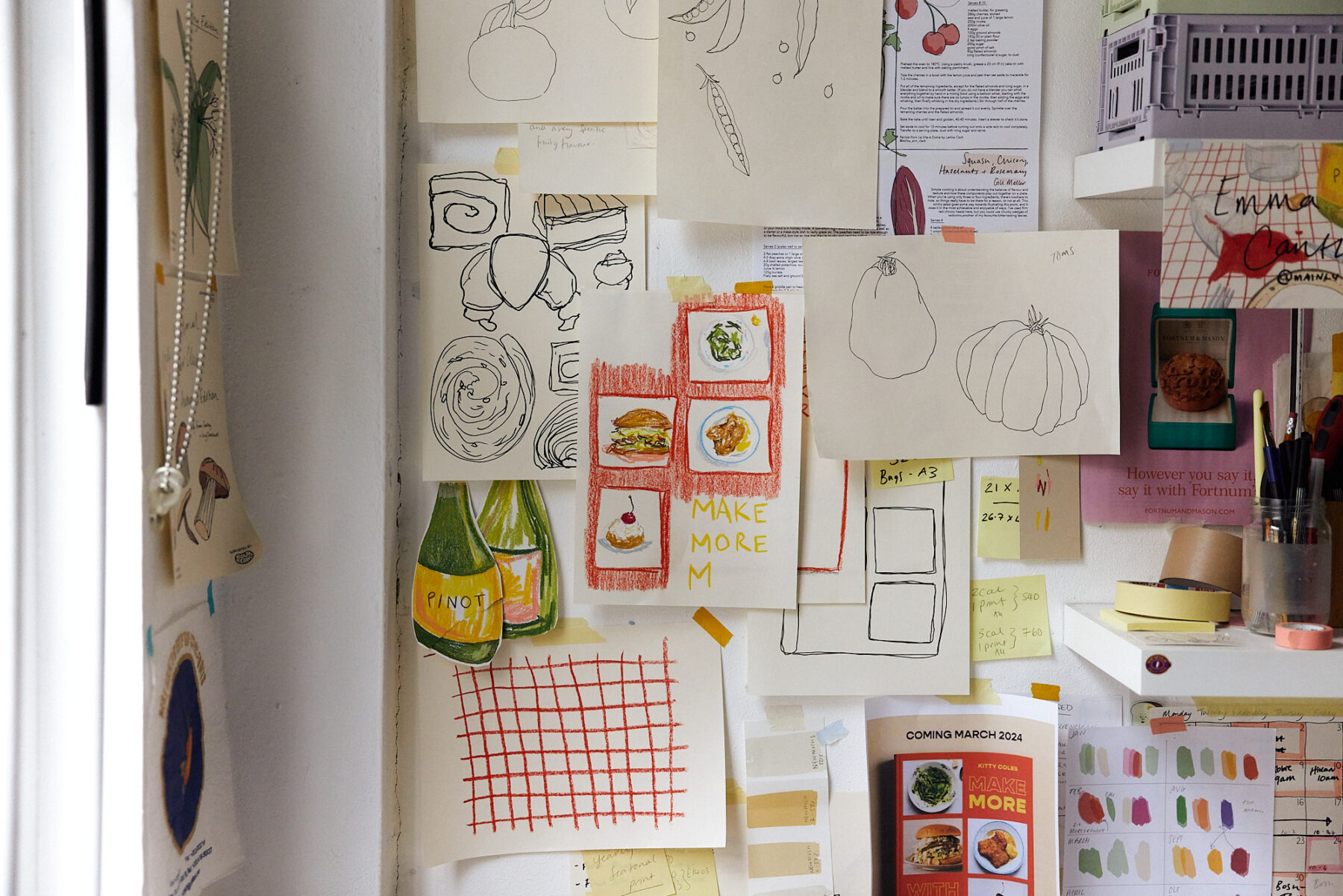
You have such a distinct style and such a beautiful use of colour and line drawings. How did that develop, and how has it changed since you began?
The whole process of finding a kind of ‘style’ has been quite a slow and probably unconscious development to be honest. I don’t think you really think about it until someone tells you or points out a pattern and then you’re like, ah! I see it!
I think the colour palette has probably come from my fear of creating anything bold and saturated. If you’re drawing something on a white background with quite bold colours it can feel super intense, so I tone it down and dilute it a little bit to be softer. Also, my work is definitely not serious — a lot of it is trying to be fun and playful, and I think that’s probably what resonates with people and why the illustrations are quite often shared. I find it really hard to call myself an artist to be honest — I mean, if I don’t portray it all in a serious manner than I don’t have to be a serious artist, right?!
I’ve always been a fine line on paper kind of illustrator and I think that’s also partly due to my fear of paint. I’ve been working with wax pastels and crayons a lot more this year and I’ve just so enjoyed the freedom of it. Generally my illustrations are hand drawn and scanned in, then coloured digitally, so it’s been refreshing to step away from the digital element altogether and just do the entire process by hand. With crayons and paper, there’s something that feels quite naive and childlike about it — it’s just drawing pictures! When you let go and give yourself permission to have fun, loosen your arm up and just draw, that’s really when I get my best work — sort of when you become like the true version of yourself or something.
Over the years there’s definitely been an element of refining too. This is the fourth year that I’ve done the calendars and although the process has been similar each year, I’ve honed in on that practice more each time. Looking back at the first one it’s quite nice to see how much I’ve progressed and improved, and I’ve also developed much more of a critical eye. I’ve also developed a lot more on the graphics side of things, seeing how elements should sit together on a page, rather than just creating an illustration and that being it. I like thinking about how the elements will interact together, so I think now my style is a lot more considered than perhaps it was at the beginning.
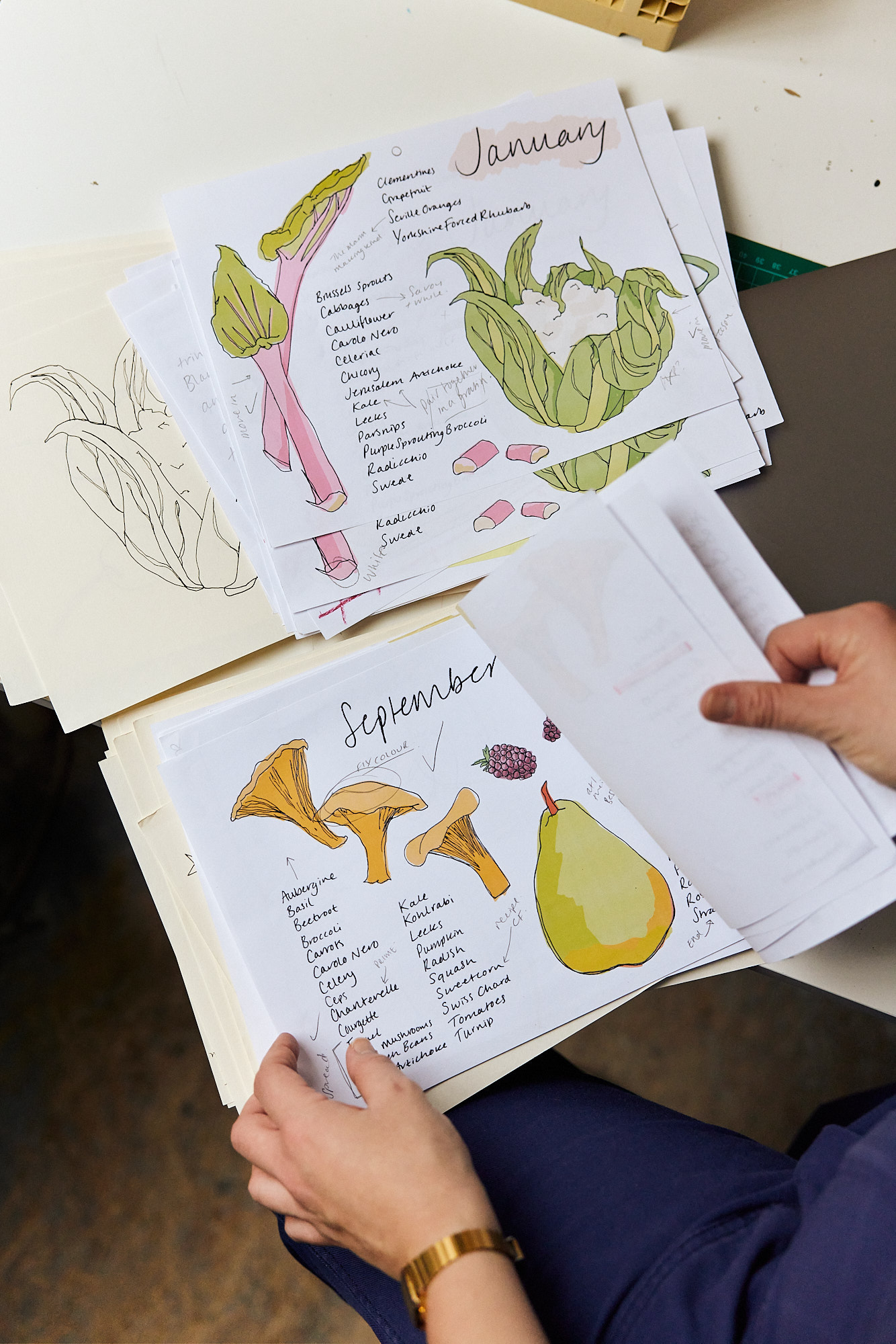
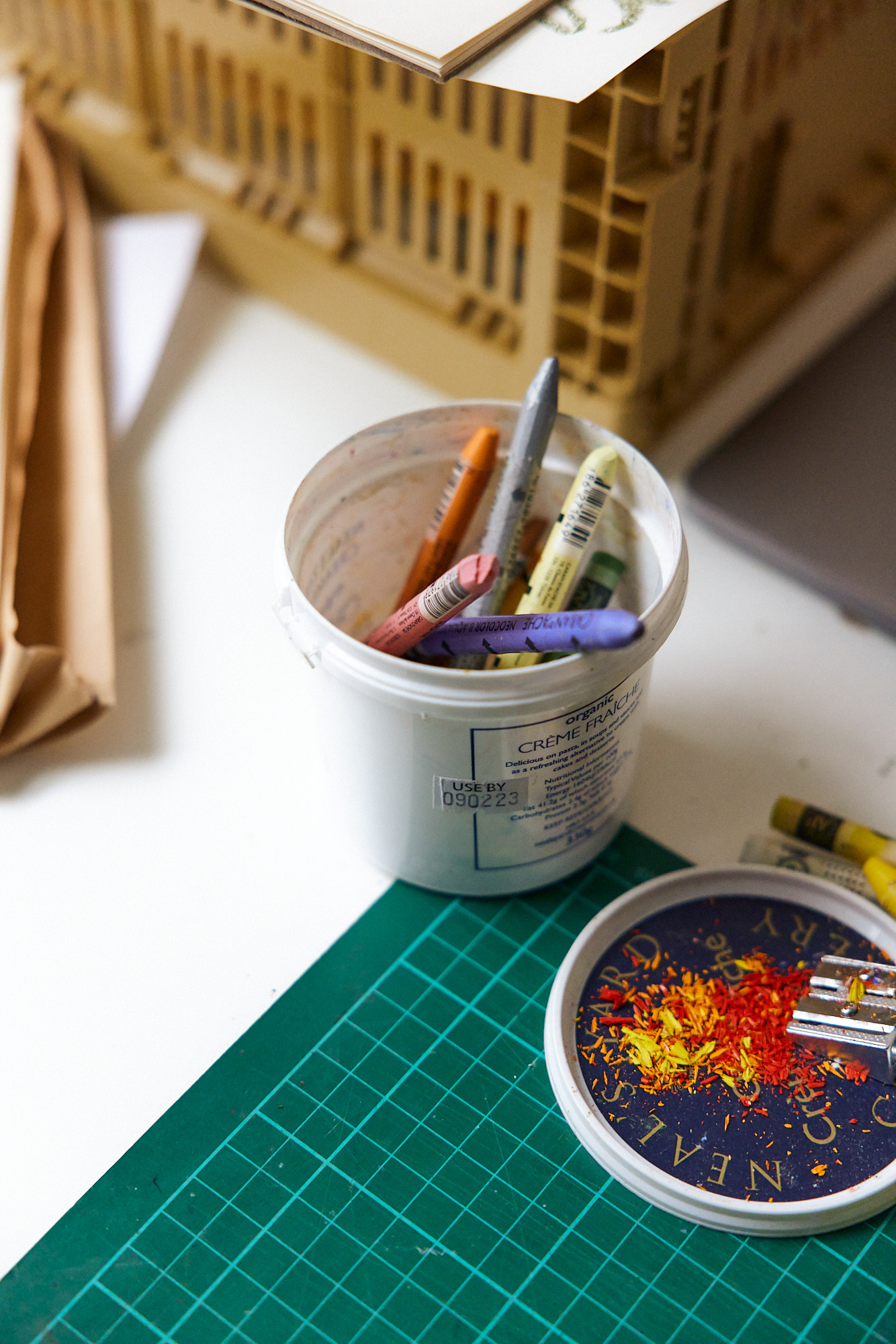
Many of your illustrations often recreate snapshots or scenes from the dinner table, ingredients, objects from the kitchen — either alone or in relation to one another. What is it that inspires you to capture and convey those moments?
There’s just something about the end of a meal table scene. There’s a kind of romance to it. I love it. It’s a feeling that everyone’s had a great time — the small spills of wine on the tablecloth, the rings from the wine glass and discarded napkins. A lot of the inspiration does come from dinners I’ve had with friends or the supper clubs that I run which is quite nice. It’s sort of like being able to take a delayed picture at the end of the night. I get to be present in the moment and really experience and enjoy the meal, and then I get to recreate it later. From just one scene you can remember the conversations that you had, what you laughed about, and that’s just so nice.
Emma’s Pantry
(5 items that are always in your pantry, or that you can’t live without!)
1. Crunchy Peanut Butter
2. Maldon Salt
3. Olive Oil (s/o Two Fields)
4. Spaghetti
5. Fennel Seeds
www.mainlybreakfast.com
@mainlybreakfast

